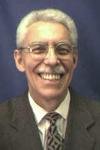People
Michael T. Turvey, Ph.D.
In Memoriam
February 14, 1942 to August 12, 2023
Emeritus Senior Scientist, Haskins Laboratories
Distinguished Professor Emeritus, University of Connecticut
Michael T. Turvey was best known for his pioneering work in ecological psychology and in applying a dynamic systems approach to the study of motor behavior. He was the founder of the Center for the Ecological Study of Perception and Action at the University of Connecticut and an Emeritus Senior Scientist at Haskins Laboratories. His research spanned a number of areas including: dynamic touch and haptics, interlimb coordination, visual perception and optic flow, postural stability, visual word recognition and speech perception. Along with William Mace and Robert Shaw, he was one of the leading explicators of the ecological psychology of James J. Gibson. With Carol Fowler, Philip Rubin, and Robert Remez, Turvey introduced the consideration of speech in terms of a dynamical systems / action theory perspective. Working with Georgije Lukatela and other colleagues at Haskins Laboratories, he exploited the dual nature of the Serbo-Croatian orthography to help understand word recognition.
Turvey was also the winner of the Ig Nobel Prize in Physics along with Professor Ramesh Balasubramaniam of Cognitive & Information Sciences at the University of California, Merced, for exploring and explaining the dynamics of hula-hooping. (Reference: "Coordination Modes in the Multisegmental Dynamics of Hula Hooping," Ramesh Balasubramaniam and Michael T. Turvey, Biological Cybernetics, vol. 90, no. 3, March 2004, pp. 176–90.)
Education
Ph.D. (Experimental and Physiological Psychology), The Ohio State University, 1967
M.A. (Physical Education), The Ohio State University, 1964
DLC (Physical Education), Loughborough University (then called Loughborough College), 1963
Representative Publications
Turvey, M. T. (1973). On peripheral and central processes in vision: Inferences from an information-processing analysis of masking with patterned stimuli. Psychological Review, 80, 1–52.
Turvey, M. T. (1977). Contrasting orientations to the theory of visual information processing. Psychological Review, 84, 67–88.
Kugler, N. P., Kelso, J. A. S., & Turvey, M. T. (1980). On the concept of coordinative structures as dissipative structures: I. Theoretical lines of convergence. Tutorials in Motor Behavior, G. E. Stelmach and J. Requin, eds., North-Holland Publishing Company.
Fowler, C. A., Rubin, P. E., Remez, R. E., & Turvey, M. T. (1980). Implications for speech production of a general theory of action. In B. Butterworth (Ed.), Language Production, Vol. I: Speech and Talk (pp. 373–420). New York: Academic Press.
Turvey, M. T., & Carello, C. (1985). The equation of information and meaning from the perspectives of situation semantics and Gibson's ecological realism. Linguistics and Philosophy, 8, 81–90.
Turvey, M. T. (1990). Coordination. American Psychologist, 45(8), 938–953.
Turvey, M. T., Shockley, K., & Carello, C. (1999). Affordance, proper function, and the physical basis of perceived heaviness. Cognition, 17, B17-B26.
Kunkler-Peck, A., & Turvey, M. T. (2000). Hearing shape. Journal of Experimental Psychology: Human Perception and Performance, 26, 279–294.
Lukatela, G., & Turvey, M. T. (2000). An evaluation of the two-cycles model of phonology assembly. Journal of Memory and Language, 42, 183–207.
Kim, N-G., Fajen, B., & Turvey, M. T. (2000). Perceiving circular heading in noncanonical flow fields. Journal of Experimental Psychology: Human Perception and Performance, 26, 31–56.
Goodman, L., Riley, M., Mitra, S., & Turvey, M. T. (2000). Advantages of rhythmic movements at resonance: Minimal active degrees of freedom, minimal noise, and maximal predictability. Journal of Motor Behavior, 32, 3–8.
Turvey, M. T., & Fonseca, S. (2009). Nature of motor control: perspectives and issues. Advances in Experimental Medicine and Biology, 629, 93–123.
Turvey, M.T., & Carello, C. (2011). Obtaining information by dynamic (effortful) touching. Philosophical Transactions of The Royal Society, Vol. 366 pp. 3123-3132
Turvey, M.T., Carello, C. (2013). The surprising nature of the reaction time task. Ecological Psychology, Vol. 25 pp. 226-232
Turvey, M.T., Fonseca, S.T. (2014). The medium of haptic perception: A tensegrity hypothesis. Journal of Motor Behavior, Vol. 46 (3) pp. 143-187
Turvey, M. T. (2016). Carol A. Fowler: Direct Realist. Ecological Psychology, Volume 28, 2016 - Issue 3: A Special Issue Honoring the Influence of Carol A. Fowler. 138-155.
Book
Turvey, Michael T. Lectures on Perception: An Ecological Perspective. Routledge: 2019.

